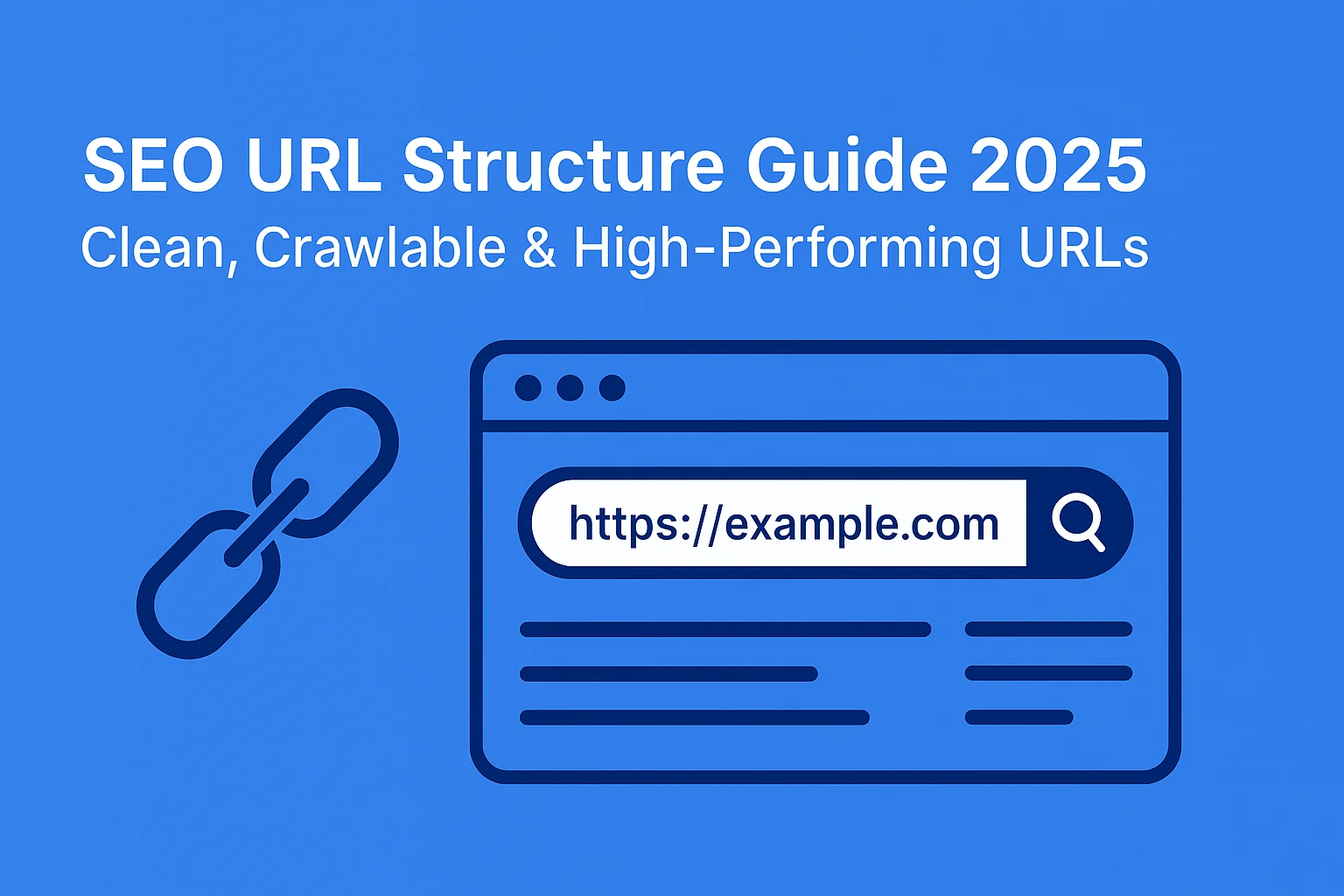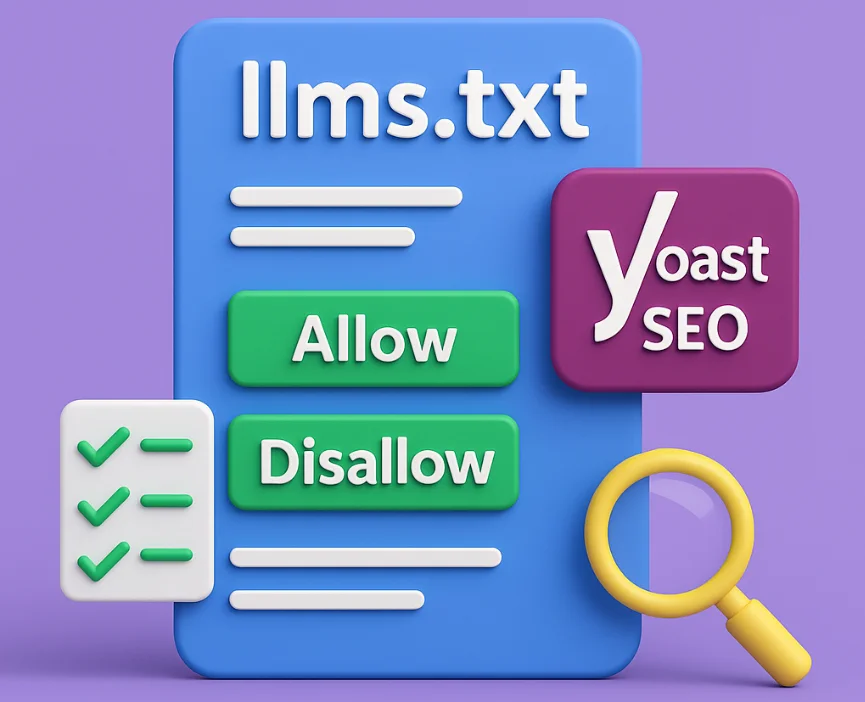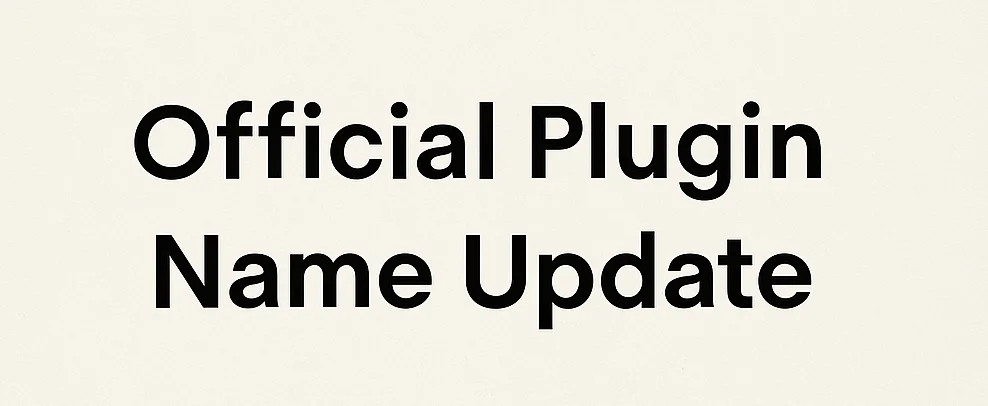SEO URL Structure Guide 2025 – Best Practices for Clean, Crawlable & Rankable URLs

Why Clean URL Structure Still Matters for SEO in 2025
🧠 What Is a URL Structure?
Your URL structure is how URLs are organized, formatted, and linked across your website. It directly impacts:
- ✅ Crawlability by Googlebot
- ✅ Indexation and canonicalization
- ✅ User experience & trust
- ✅ Click-through rates (CTR) in SERPs
- ✅ Structured internal linking
🔗 If your site struggles with URL indexing, start with:
Fixing Crawled – Currently Not Indexed
📉 What Happens with Poor URL Structure?
| Problem | SEO Impact |
|---|---|
| Long, messy URLs with tracking/query strings | Reduces crawl efficiency, causes duplicate content |
| Session IDs or faceted parameters | Google wastes crawl budget |
Unreadable slugs (e.g., /?p=123) | Lower CTR, no keyword relevance |
| Case-sensitive or inconsistent URLs | Splits ranking signals |
Fragment URLs (#section) | Google may ignore anything after # |
🔗 These are often seen on poorly optimized platforms or unstructured CMS setups. For dynamic filters, see:
Faceted Navigation SEO Guide
🚀 Why It Still Matters in 2025
Even with AI and entity-based indexing, URL hygiene remains foundational because:
- Google uses URL paths to infer site structure
- Clean URLs encourage internal links and rich snippets
- They perform better in AI Overviews and SERP previews
🔗 Read: Google AI Search Update – 21 May 2025
✅ Good vs. Bad URL Examples
| Type | ✅ Good | ❌ Bad |
|---|---|---|
| Product | /shoes/nike-air-max | /item?id=12345&ref=abc&utm=campaign |
| Blog Post | /seo/url-structure-best-practices | /blog/article?view=6789&lang=en |
| Category | /laptops/hp | /store?cat=5&brand=hp&type=list |
Good URLs are descriptive, lowercase, hyphenated, and permanent.
🔗 For naming inspiration, explore: Google Trends SEO Topics
🧭 What This Guide Will Cover
This guide includes:
- Do’s and don’ts for SEO-friendly URLs
- How to clean up query parameters and tracking links
- Use of canonical tags and redirect chains
- Internal linking strategy using clean URLs
- Fixing legacy structures in WordPress, Shopify, and custom stacks
🔗 Also see: Technical SEO Power Guide
URL Formatting Rules Every Website Should Follow in 2025
✅ 1. Use Hyphens, Not Underscores
Google treats hyphens (-) as word separators, but not underscores (_).
Example:
- ✅
/seo-url-best-practices= interpreted as: “seo”, “url”, “best”, “practices” - ❌
/seo_url_best_practices= interpreted as one single word
✅ 2. Use Lowercase URLs Only
URLs are case-sensitive beyond the domain level.
❌ Bad Practice:
/Blog/SEO-Tips/blog/seo-tips
Google treats these as two different URLs, causing duplicate content or crawl dilution.
📌 Standardize all URLs to lowercase and use 301 redirects to correct legacy versions.
✅ 3. Keep URLs Short, Descriptive & Permanent
The ideal SEO URL:
- Includes 1 primary keyword
- Avoids stop words like “a”, “and”, “of”
- Stays under 60–80 characters
✅ Example:
txtCopyEdithttps://kumarharshit.in/seo/url-structure-best-practices
❌ Avoid:
txtCopyEdithttps://example.com/store.php?id=3434&name=product&mode=view
🔗 Clean URLs like the one above increase CTR, especially in AI Overviews & Rich Snippets
✅ 4. Use Static, Human-Readable URLs
Google recommends using static URLs over dynamic, query-string-heavy URLs.
❌ Not recommended:
pgsqlCopyEdit/shop/index.jsp?product_id=78434&ref=fb&utm_source=email
✅ Better:
bashCopyEdit/shop/laptops/dell-inspiron-14
💡 Query strings are okay when blocked from crawling or handled via canonical URLs.
🔗 Learn how to handle them smartly in the Crawl Budget SEO Guide
✅ 5. Maintain a Clear Folder Structure
Folder hierarchy tells both users and bots about content relationships.
Example:
txtCopyEdit/blog/seo/google-search-console-guide
/products/electronics/laptops/hp
This allows:
- Easier internal linking
- Breadcrumb schema compatibility
- Better crawl signals
🔗 Enhance structure with internal links from: Modern SEO Strategies
✅ 6. Avoid URL Parameters for Key Pages
Use URL parameters only when:
- The content doesn’t need to be indexed (e.g., search, sort, filter)
- You block or canonicalize them properly
Otherwise, move important content to clean URLs.
📌 Also avoid using UTM links for internal linking — these create duplicate paths.
🔗 See Faceted Navigation SEO Guide for parameter control.
Canonicalization, Redirects & Parameter Control for URL Health
🏷️ 1. Use Canonical Tags to Consolidate URL Variants
When the same content is accessible via multiple URLs, use <link rel="canonical"> to declare your preferred version.
✅ Example:
htmlCopyEdit<link rel="canonical" href="https://example.com/seo/url-structure-guide" />
Common issues that need canonicals:
- UTM-tagged internal links
- URLs with filters or sorting
- Session IDs or tracking params
📌 Don’t canonical everything to the homepage — each page should point to its own best version.
🔗 Related: How Google Handles Duplicate URLs
🔁 2. Use 301 Redirects to Consolidate URL Authority
Use 301 (permanent) redirects to:
- Merge www and non-www versions
- Merge trailing slash and non-slash versions
- Fix upper/lowercase duplicates
- Redirect outdated paths to new URLs
Example with .htaccess:
apacheCopyEditRedirect 301 /Old-URL /new-url
📌 Always keep redirect chains to a maximum of 1 hop. Avoid 301 → 301 → 301…
🔗 For status code strategy, see: HTTP Status Codes for SEO
❌ 3. Avoid Crawling Unnecessary URL Parameters
Let’s say you allow filters like this:
bashCopyEdit/products?color=black&size=9&sort=price
If unblocked, this creates thousands of crawlable duplicates.
🛠️ Solution:
- Block via
robots.txt:
txtCopyEditDisallow: /*?sort=
Disallow: /*&ref=
- Or canonicalize to clean URL:
htmlCopyEdit<link rel="canonical" href="https://example.com/products/shoes" />
🔗 More examples in: Faceted Navigation SEO Guide
⚙️ 4. Avoid Fragment URLs (#section)
Google ignores everything after # in most cases.
❌ Don’t use:
bashCopyEdit/product#specifications
Instead, use scroll-to links with JavaScript or better:
Separate indexable sections with dedicated URLs:
bashCopyEdit/product/specifications
/product/reviews
🧰 5. Platform-Specific URL Fixes
✅ WordPress:
- Use SEO plugins like Rank Math or Yoast to auto-canonicalize pages
- Use slug editing to control keyword placement
- Avoid permalink structures like
/?p=123
✅ Shopify:
- Be cautious of tag/filter URLs (
/collections/shoes?color=blue) - Use canonical + robots.txt cleanup
- Watch for duplicate collection/product combinations
🔗 Need more Shopify fixes? Let me know and I’ll generate a bonus section.
Final Checklist, Internal Linking & URL Health Maintenance
📋 Final URL SEO Implementation Checklist
| Task | Status |
|---|---|
| Use lowercase, hyphenated slugs | |
| Remove or block session IDs, tracking params | |
| Canonicalize all variant URLs properly | |
| Use 301 redirects for outdated/mistyped paths | |
Block unnecessary parameters in robots.txt | |
| Create short, keyword-relevant slugs | |
| Avoid underscores, capital letters, and fragments | |
Segment folders logically (e.g., /blog/seo/) | |
| Ensure sitemap URLs are clean & crawlable | |
| Keep URL length under 60–80 characters |
📌 Combine this checklist with Google Search Console URL Inspection to validate implementation.
🔗 Internal Linking Strategy for Clean URLs
Googlebot follows internal links to decide:
- Crawl priority
- Relevance
- Page relationships
✅ Best Practices:
- Link using clean, canonical URLs only
- Avoid linking to URLs with UTM or query strings
- Use descriptive anchor text (not “click here”)
- Keep internal link depth under 3 levels wherever possible
- Don’t link to URLs blocked in
robots.txt
🔗 Guide: Modern SEO Strategies
🧠 Maintenance & Long-Term URL Health Tips
- Use tools like Screaming Frog, Ahrefs, or Sitebulb to audit broken/redirected URLs
- Keep your XML sitemap updated with only valid, canonical URLs
- Avoid unnecessary slug changes — changing URLs frequently causes rank loss
If you must change URLs, use 301 redirects + update all internal links pointing to old versions.
🔗 Learn more in: Power of Technical SEO
📚 Continue Learning
Here are more articles to strengthen your full SEO foundation:
- 🔗 Crawl Budget SEO Guide
- 🔗 Google Trends SEO for Real-Time Strategy
- 🔗 Faceted Navigation SEO Best Practices
- 🔗 Image License Metadata for SEO
- 🔗 Schema Markup Optimization for SEO


Leave a Reply